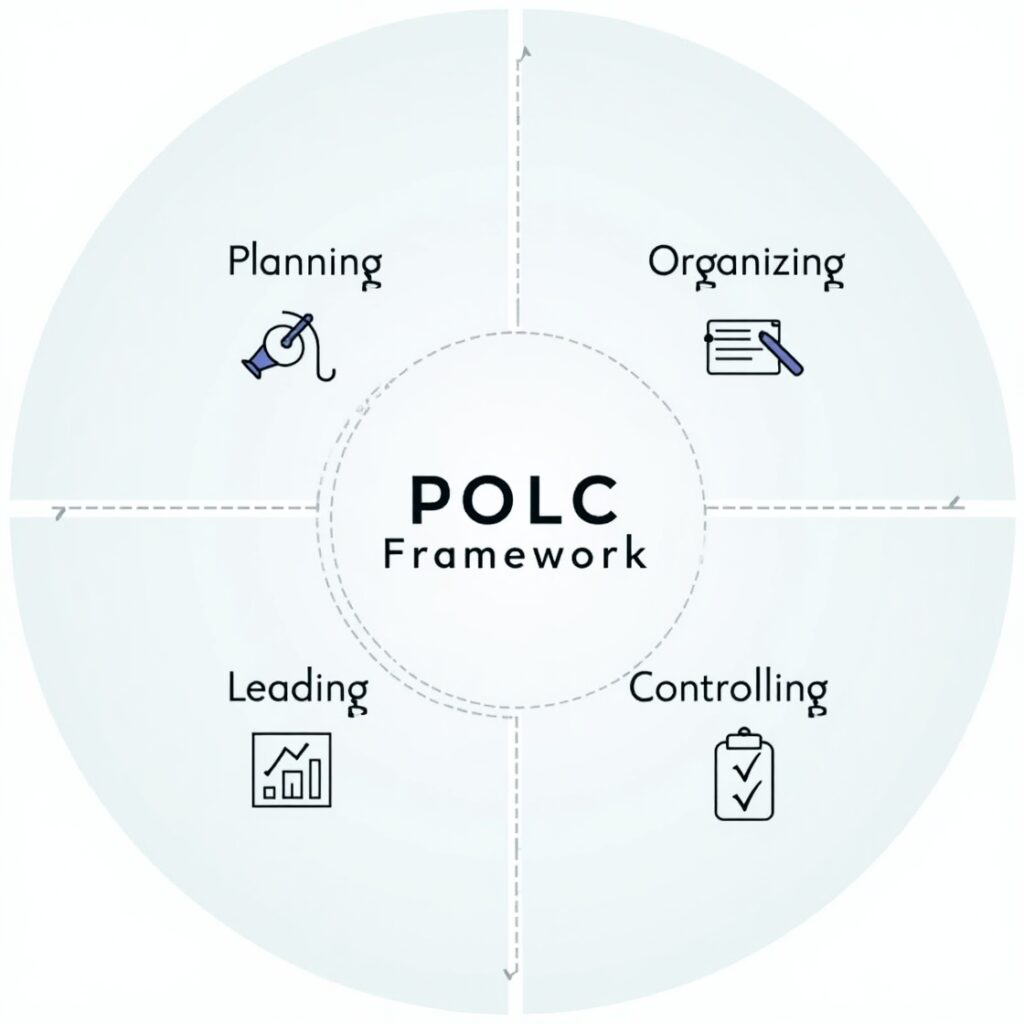Management is a universal process that involves planning, organizing, directing, and controlling resources (human, financial, physical, and informational) to achieve organizational goals efficiently and effectively. The principles and functions of management provide a framework for guiding managerial actions and decision-making.

Principles of Management (Henri Fayol’s 14 Principles)
Henri Fayol, a pioneer of management theory, outlined 14 principles that serve as guidelines for effective management:
- Division of Work – Specialization increases efficiency.
- Authority & Responsibility – Managers must have authority to give orders and take responsibility for outcomes.
- Discipline – Employees must respect organizational rules and agreements.
- Unity of Command – Each employee should receive orders from only one superior.
- Unity of Direction – Teams with the same objective should work under one plan and one leader.
- Subordination of Individual Interest to General Interest – Organizational goals should come before personal interests.
- Remuneration – Fair pay and incentives motivate employees.
- Centralization vs. Decentralization – Balance between top-level control and employee autonomy.
- Scalar Chain (Chain of Command) – Clear line of authority from top to bottom.
- Order – Resources (people and materials) should be in the right place at the right time.
- Equity – Fair and kind treatment of employees fosters loyalty.
- Stability of Tenure – Low employee turnover improves efficiency.
- Initiative – Employees should be encouraged to take ownership of their ideas.
- Esprit de Corps (Team Spirit) – Promoting teamwork and unity enhances performance.
These principles remain relevant in modern management but are often adapted to fit contemporary workplace dynamics.
Functions of Management (POLC Framework)
The four core functions of management, as identified by management theorists like Luther Gulick and later refined, are:

Planning
- Setting organizational goals and determining the best course of action.
- Includes strategic planning, tactical planning, and operational planning.
- Example: A company sets a 5-year growth strategy.
- Organizing
- Structuring resources (people, materials, technology) to implement plans.
- Defining roles, responsibilities, and reporting relationships.
- Example: Creating departments and assigning tasks.
- Leading (Directing)
- Motivating, guiding, and supervising employees to achieve goals.
- Involves leadership, communication, and conflict resolution.
- Example: A manager inspires a team to meet sales targets.
- Controlling
- Monitoring performance, comparing it with goals, and taking corrective action.
- Includes setting standards, measuring results, and implementing adjustments.
- Example: Using KPIs to assess project success and making improvements.
Some modern models add additional functions like:
- Staffing (Recruiting, training, and retaining employees)
- Coordinating (Ensuring harmony across departments)
Key Takeaways
- Principles provide timeless guidelines for managerial behavior.
- Functions (POLC) describe the step-by-step process of managing an organization.
- Effective management requires balancing structure (organizing, controlling) with people skills (leading, communicating).